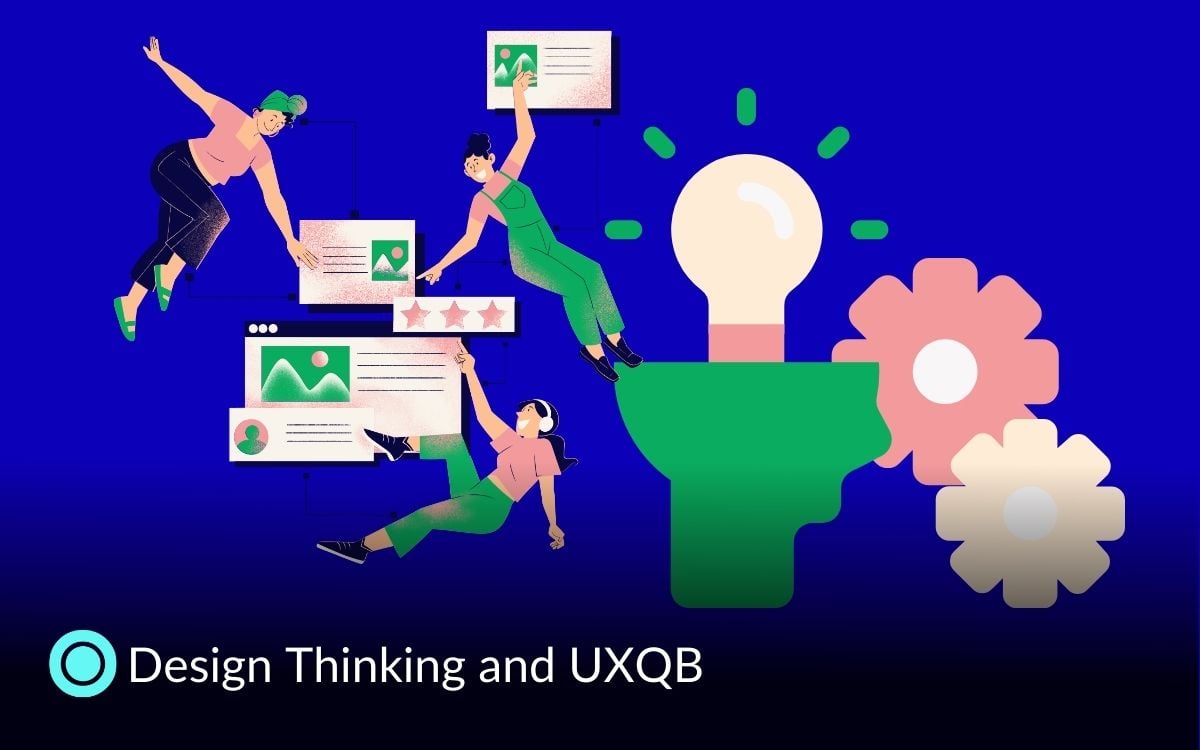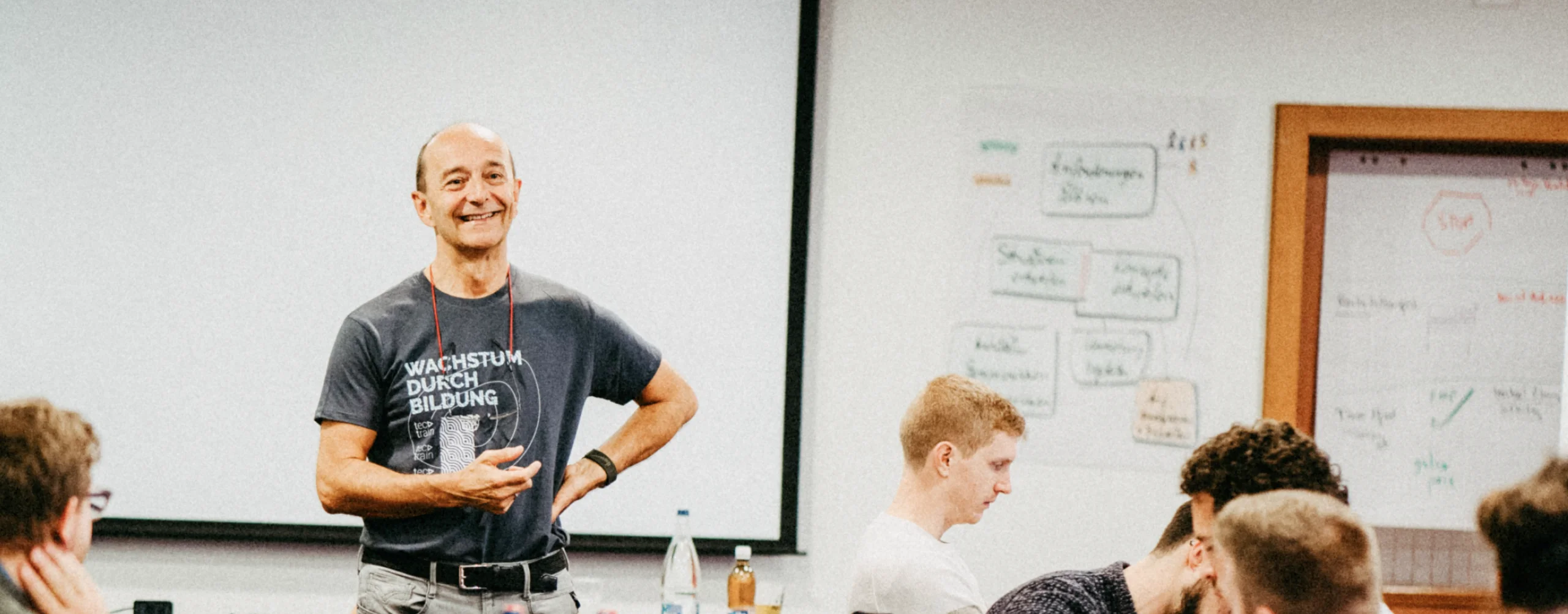Design Thinking and UXQB certification form a powerful combination for building products that resonate with users. With the design thinking method, a team is empowered to creatively work out complex problems, understand users empathetically, and ideate innovative solutions. Meanwhile, UXQB CPUX-F ensures these solutions are not only innovative but also usable, accessible, user-centered and oriented toward the satisfaction of the user.
This combination of approaches, in which Design Thinking serves to drive creative exploration of possible solutions, while UXQB ensures those solutions turn out practical and usable, makes the two extremely effective mates in contemporary design challenges. Each supports the other to create that environment wherein user experience is promoted right from ideation to implementation.
What is UX and design thinking?
It means all the experience of a user while he or she is using a service or product, including emotional responses, ease of use, and satisfaction. User centered design in UX focuses on enhancing this by underlining the users' journey before, during, and after their interaction with the product. UX professionals normally use research, usability testing, and iterative design to refine products for the satisfaction of meeting users' needs.
In contrast, Design Thinking is a more general frame for solving complex, not clearly defined problems. It covers a process of empathy with users, defining the problem, ideation of creative solutions and testing and iteration with prototypes.
While both UX and Design Thinking have their focus on the user, Design Thinking operates on a higher, strategic level. It addresses the why of any solution, while UX needs to deal with the how: how users interact with any given product and how they can improve that interaction.
Together, user centered design and the design thinking method ensure that teams are creating not only innovative solutions but also crafting experiences that are intuitive, satisfying, and efficient for users.
Let's explore how UX research competes with Design Thinking and in what ways each differs in terms of their goals and processes.
What is the difference between UX research and design thinking?
Although UX research and Design Thinking share one strong commonality-the goal of developing user-centered products-they differ in approach and focus.
UX research mainly deals with data gathering and insights from users, to make informed design decisions. UX research focuses on the behavior, needs, and preferences of users through tools like surveys, interviews, tests for usability, and observations. Data from such insights is used in refining and optimizing the user experience to ensure that the design aligns with the context of the user in the real world and provides access to the best possible interaction.
On the other hand,Design Thinking is a more complete problem-solving methodology that starts with empathizing with the users to gain deep insight into their needs and then takes one on a journey through ideation, prototyping, and testing for uncovering innovative solutions. The Design Thinking approach is more systems-level and ideal for addressing complex or "wicked" problems-hard to define or solve. It tends to be more about creative ideation and ensuring that solutions are validated before they are implemented.
In brief:
-
UX research goes deep into user behavior and irons out an already existing solution.
-
Design thinking does start with a problem, trying to figure out innovative and creative solutions, sometimes even before UX research comes into play.
What is the difference between design thinking and lean UX?
While Design Thinking and Lean UX have so much in common, such as having a user-centered focus, for instance, they serve different purposes within the design process.
Design Thinking usually applies to early exploration in solving a problem. It seeks to explain and understand users' needs through empathizing, ideation, and prototyping to test potential solutions. This is best utilized for open-ended problems that are complex in nature, thereby offering no clear direction forward.
On the contrary, Lean UX is all about rapid iteration and validation. Most of the time, it works inside agile development cycles focused on building, testing, and learning fast. Lean UX reduces investments in long research or prototyping phases; instead, it draws on frequent user feedback to improve the design regularly. Its effectiveness is felt particularly in fast-moving product development environments where a working solution has to be materially put out as fast as possible .
In brief:
-
Design thinking is all about ideation and finding creative solutions for complex problems.
-
Lean UX is about quickly validating those ideas through fast feedback loops.
What is systems thinking in UX design?
Systems thinking in UX design considers the greater ecosystem of a selected product that the user interacts with. This is beyond just the user interface to consider all the touchpoints, interactions and influences around them that affect their experience.
Systems thinking in Design Thinking is applied to the analysis of a service or product as a whole, about how the different parts interact. That would be helpful in complex projects, especially for service design, when so many elements-people, processes, and tools-can interact with each other in ways that could affect the user's experience. Wicked problems, having no single right solution, are particularly given to a systems thinking approach since they often contain multiple interacting parts.
Systems thinking in designing, for example, a health application, would take into account the functionality of the app by oneself, extending into the manipulation of a user through his or her journey with health professionals, medical records, and other technologies. Furthermore, as many offline touchpoints are increasingly digitized, their importance in UX is growing; user experience becomes more comprehensive and consistent through the seamless integration of both offline and online touchpoints.
What Is Design Thinking In UX / UI Design?
Design thinking in UX/UI design is a problem-solving approach that focuses on understanding the users, empathizing with the users' needs, and coming up with innovative solutions. This methodology enables designers in UX/UI design to be concerned not only with the technical aspects of the interface but also with how users will interact with the system and how the product is going to fit into their overall experience.
The Design Thinking process generally includes five important stages: empathize, define, ideate, prototype, and test. These stages are iterative in nature and involve constant feedback on behalf of the users, allowing flexibility in it when tackling user experience challenges. How this applies to UX/UI design:
-
Empathize: This is the very first stage at which one needs to understand the needs of the users; the emotional feelings associated with these will also be gauged. The findings could be through direct interviews, observations, and research provide foundations that would form user pain points and desires.
-
Define: Once insights are gathered, designers define particularly what problem they are solving. This is a very important stage of clarifying the challenge. This helps the design team to keep their focus on user needs.
-
Ideation: After definition, the creative process of solution finding begins. A large number of solutions and ideas are generated uninhibitedly by designers. The intent is to explore every avenue of possibility from simple fixes to more innovative approaches without stifling creativity too early.
-
Prototype: At this stage, designers create the low-fidelity versions of possible solutions. This should be in a simple MVP, wireframe, a sketch or even a clickable prototype so that users can interact with the design and give feedback.
- Test: In this stage, the design is tested by the users. Feedback provided here is essential for the refinement of the solution iteratively, and improvement at every step so that it integrates in the final design.
Design thinking helps place the user's experience at the very core of the UX/UI design to drive more thoughtful, 'user-friendly' interfaces. This process will ensure all design stages progress smoothly and designs are aesthetically pleasing, functional, and accessible.
Design Thinking successful within UX/UI designing is a direct result of focusing on the user. It solves complex but, more importantly, undefined problems. Second, it creates technology that was both harmonious and in tune with the users' needs through seamless integrations of user feedback throughout the whole development process.
How do UXQB certifications cover design thinking in UX?
The CPUX-F certification for UXQB Certified Professional for Usability and User Experience-Foundation Level gives the overview on human centered design, usability, and user experience to professionals. Though not specifically mentioned as a separate module, Design Thinking, the UXQB curriculum imparts a number of cornerstones leading directly to such processes as Design Thinking and its application in UX design. Let's break it down, focusing on key areas of the UXQB curriculum and how they support Design Thinking approaches.
-
Human centered design process: The central idea of the CPUX-F certification is human centered design, which is basically a rendition of concepts of Design Thinking. From this curriculum, the HCD process emphasizes foremost the need to understand the user's context, needs, and goals; thereafter, a solution must be created that should be feasible and meet user expectations.
This also aligns with the empathize stage of Design Thinking, where designers start by deeply understanding their users before moving on to ideation and prototyping. -
Understanding the Context of Use: The UXQB curriculum places considerable emphasis on understanding and specifying the context of use. That is, identifying the users and their goals, and the environment in which the system shall be used. In Design Thinking, understanding user context forms a really basic part of the very first stage, Empathy, by which designers fully fathom the real-world challenges and environments that users have to put up with. In addressing this within the UXQB curriculum, one is bound to consider how to bring those insights into the designs right from the outset.
-
User requirements and design solutions: In this stage, both Design Thinking and the UXQB curriculum have the intent of defining the problem based on research related to users and coming up with design solutions. The CPUX-F curriculum includes parts needed for specifying user requirements and the generation of design solutions that are considered to be vital in the ideation and prototyping stages of Design Thinking. It will surely ensure that the professional is able to make solutions that are creative but at the same time meet user needs effectively.
-
Usability testing and assessment remain probably the most crucial parts of both UX design and Design Thinking, where testing solutions against users' feedback is performed. Advanced training in usability testing, usability inspection, and user surveying that the UXQB certification covers is necessary for the iterative nature of Design Thinking. Such methods allow designers to obtain insight into how the proposed solutions work in practice; thus, an ongoing refinement and improvement are created.
-
Practical UX Design Tools: The UXQB curriculum is equipped with practical tools and methods to perform user research, usability testing, and user surveys. These are an important part of the implementation of Design Thinking, especially in prototype and test phases. With focus on usability and user feedback, UXQB certification ensures that the designs are validated and optimized prior to final implementation.
With these principles in mind, let’s consider a practical example that illustrates how UXQB concepts can support each stage of the Design Thinking process.
Practical Applications
To understand how UXQB principles can be integrated into a Design Thinking project, imagine designing an IoT device for an insulin pen while covering all the stages from understanding the user's needs to refining the final product by receiving feedback.
I have been part of one such IoT project early in my career, which was technically-rich and from real life,-be it interdisciplinary understandable. We set out to develop an IoT device for insulin pens with medically graded temperature control. I chose to share this experience because it relates to everyday life and resonates across multiple fields. The responsible process gave an intensive feeling about the levels of Design Thinking. It underlined the need to understand user needs to guide the product.
In the beginning of this project, we directed our attention mainly to the needs of the users: we did "Empathy Map" exercises and mapped the problems in search of core requirements. This indicated some crucial needs like 'Medical-grade temperature control', 'Battery status showing notifications' or 'Quick use in an emergency'. For instance, notifications like "How much time it's possible to support cooling/heating?" were planned for users to get real-time information from.
- The Empathize stage in Design Thinking purely connects with the approach of HCD from UXQB CPUX-F curriculum where teams input knowledge regarding user needs.
- Also, CPUX-F provides an emphasis on the collection of user requirements, which fits quite aptly in the Define stage of Design Thinking. This part of the curriculum leads professionals in identifying and specifying user needs to make relevant solutions effectively.
In this respect, for defining the context of usage, various challenges which one faces in real life were analyzed by performing surveys and interviews and needs assessment tests. Scenarios emerged such as leaving the medication inside a hot car and probably never being able to use it again, parents of diabetic kids not being at a position to tell if their children took their medication when away from them, occasions where one moves his or her medication to a safe cooler place but later forgets about it.
All these cases demonstrated beyond any doubt the real need for a reliable and ever-available medical solution. Guided by these findings, we decided to equip the product with unique features, namely: Proximity Control, Parental Follow-up, Reminders, and Usage Program Tracking.
Every new feature was designed to take into account user flows, which detail interactions. We considered frequency of interaction, color, sound, emergency interactions, reassuring user feedback, and more.
- CPUX-F certification cropped up again at that stage. CPUX-F curriculum encompasses specific tools and methods to conduct usability tests, which are vital during the Test stage of Design Thinking. This course will lead the professional in collecting real-world feedback and refining the solutions iteratively based on user interactions.
We did usability testing in the real world by dividing the application among different user groups to test it in their natural settings. Using user feedback helped us in identifying areas for improvement and moving the product to the next design cycle. This cycle was repeated until the product was ready for market release.
This really drove home how important user feedback is in the product development cycle and just proved to be a really powerful example of what Design Thinking looks like in practice. At each stage in this process, excellence of exploration, deep understanding of user needs, and engineering of innovative solutions became evident.
Every insight we gained reminded us that design is an endless cycle of improvement and renewal-that's a principle underscored in both UXQB and Design Thinking methodologies.
Conclusion
Design thinking and UXQB make a great team in the development of user-centered innovation. Design Thinking empowers teams to stay focused on creative solutions for the biggest problems by putting the user at the center of what he/she needs, while UX ensures refinement to make it usable, functional, and enjoyable. Both are user-oriented, but design thinking is broader and more conceptual while UX goes to the details of the effective working of the design.
The UXQB certification adds to this by equipping the professional with hands-on tools in usability and human-centered design, complementing perfectly the process of Design Thinking. Both thus merge into a holistic approach to balancing innovation and usability so that the end product is creative while functional.





